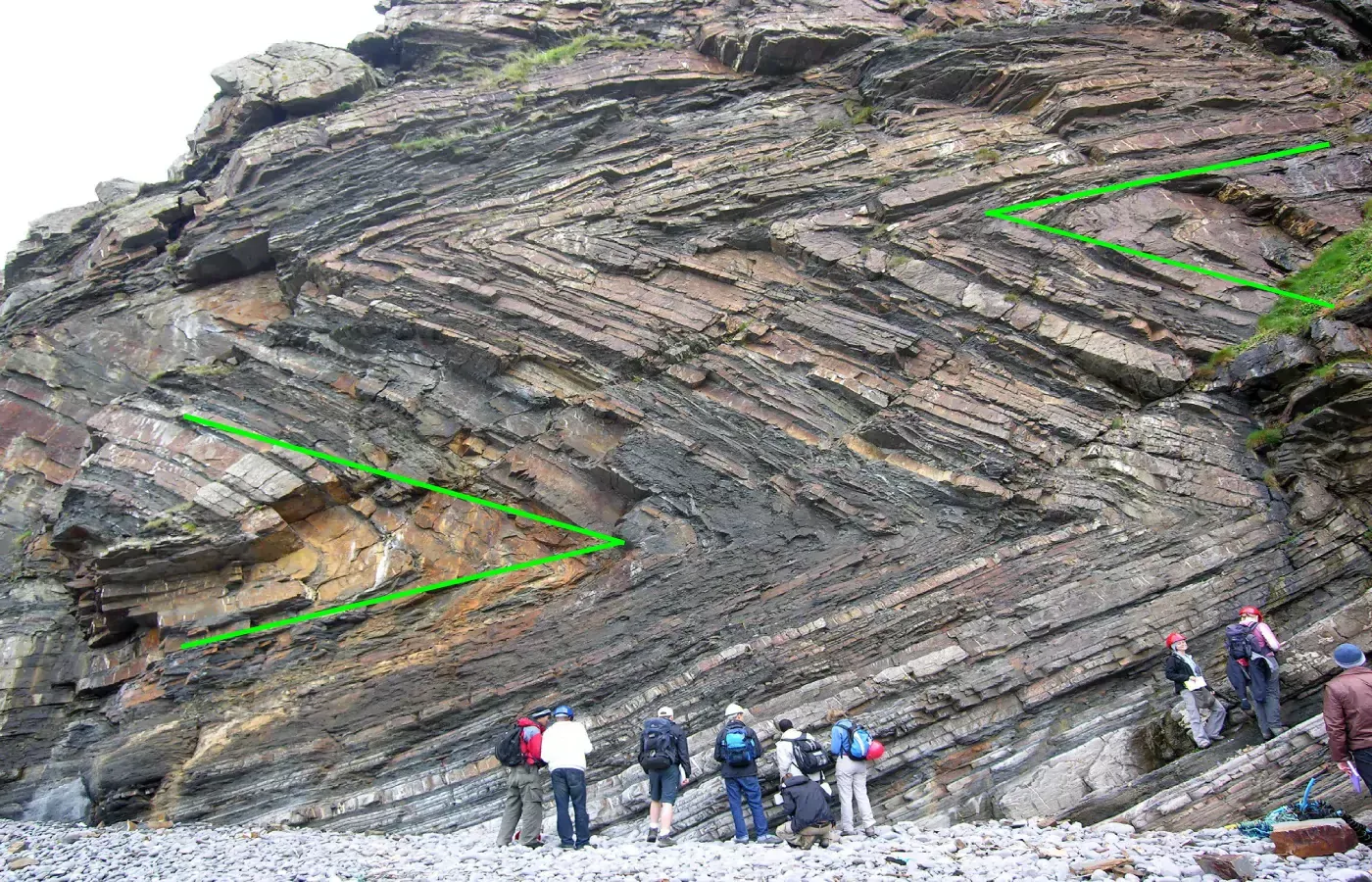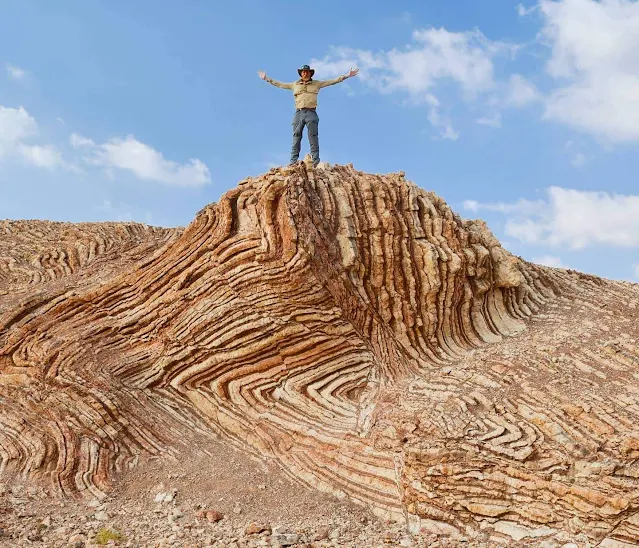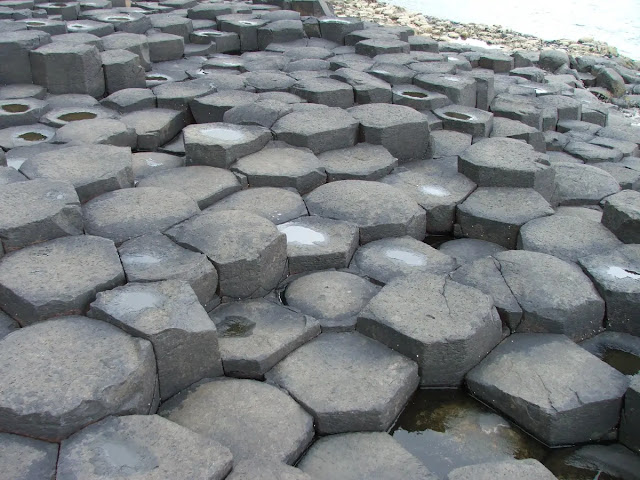Recumbent Fold
Recumbent fold is a geologic feature in which rock layers are folded nearly horizontally. The axial plane, which is the imaginary line down the center of the fold, is nearly flat. This type of fold occurs when immense pressure from tectonic plates compresses rock layers. They can form on a wide range of scales, from centimeters to kilometers.
The term "recumbent" implies a position lying down or reclining, reflecting the nearly flat orientation of the fold.
Recumbent folds are typically formed by intense compressive forces,such as those that occur during mountain building. These forces can cause the layers of rock to buckle and fold over on themselves. Recumbent folds can also be formed by other geological processes, such as the movement of glaciers. Recumbent folds can be difficult to identify in the field, as their nearly horizontal orientation can make them appear as flat-lying layers. However, they can be important indicators of the forces that have acted on a region of rock.
 |
| Recumbent Chevron Folds at Millook Haven - Cornwell, UK |
Key characteristics of recumbent folds
Axial plane: The axial plane is the imaginary surface that divides the fold into two limbs. In a recumbent fold, the axial plane is nearly horizontal.
Limbs: The limbs are the two sides of the fold. In a recumbent fold, the limbs may be nearly parallel to each other.
Dip: The dip is the angle that the limbs of the fold make with the horizontal plane. In a recumbent fold, the dip of the limbs is typically very low.
Plunge: The plunge is the angle that the fold axis makes with the horizontal plane. In a recumbent fold, the plunge may be shallow or moderate.
 |
| Recumbent Folds, Capitol Butt, Arizona Photo: Dr. John H. Whitmore |
Types of Recumbent Folds
Symmetrical Recumbent Folds: In symmetrical recumbent folds, both limbs of the fold are roughly equal in length and dip symmetrically away from the axial plane, which remains nearly horizontal.
Asymmetrical Recumbent Folds: Asymmetrical recumbent folds have one limb that is longer or more steeply dipping than the other. The axial plane still remains nearly horizontal.
Overturned Recumbent Folds: In these folds, one limb is tilted beyond vertical, resulting in the axial plane being inclined at a low angle or nearly horizontal. The overturned limb often exhibits a steep dip, while the other limb remains gently dipping.
Isoclinal Recumbent Folds: Isoclinal recumbent folds have limbs that are parallel and closely spaced, giving the fold a nearly cylindrical appearance. The axial plane is typically horizontal or has a very low dip angle.
Cylindrical Recumbent Folds: In cylindrical recumbent folds, both limbs are parallel and maintain a consistent spacing and dip throughout the fold. The fold appears cylindrical, with the axial plane being almost horizontal.
Disarmonic folds: In these folds, the limbs of the fold have different thicknesses. This can happen because the rock layers have different strengths.
Recumbent Fold Photos:
 |
| Recumbent Chevron Folds, Oman Photo: GeoWorld Travel |
 |
| Asymmetric Recumbent Fold, India |
Read also:
Types of Geological Folds With Photos
The Terminology of a Fold
10 Amazing Geological Folds You Should See




%20(1).webp)



